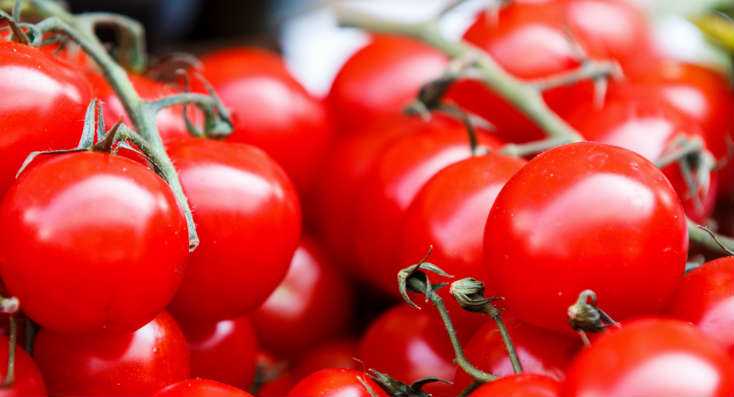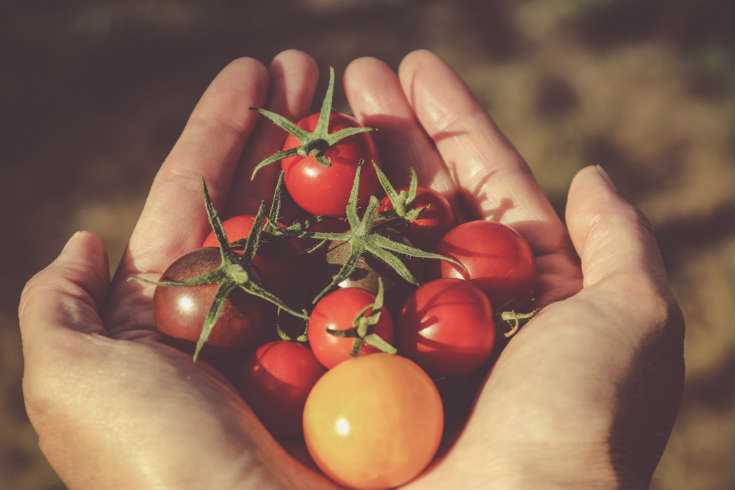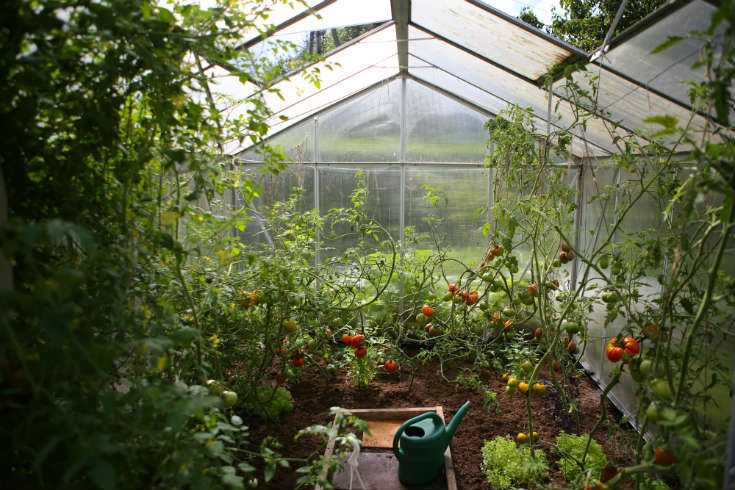Tomato Plant Spacing: How Far Apart to Plant Tomatoes?

Tomatoes are one of the most-consumed vegetables in America, with the average American eating over 28 pounds of tomatoes per year. From pizza to pasta, to salsa – or simply adorning a fresh garden salad – tomatoes are the core ingredient and heart of these dishes. In this article we are going to discuss how to grow tomatoes at home, and How far apart to plant tomatoes, in particular?
History of Tomatoes
It is believed that the tomato is native to America, as its origins can be traced back 1,300 years to the early Aztec civilization.
Europeans were introduced to the tomato in the 1500’s when European explorers who had helped discover the new land brought the vegetable back to their home countries. There, the tomato rose to fame as a staple in many Mediterranean, Spanish and Italian dishes.

Further north in Britain, however, the vegetable was met with suspicion. Although it was appreciated for its beauty, many in England assumed the tomato to be poisonous.
Perhaps the prejudice spread to the upper-class Americans because the tomato was not a common kitchen staple in its native continent until the mid-1800’s.
When Europeans began migrating to the new country, they brought with them their tomato-based recipes. Despite its fluctuation in popularity through the years, the tomato made its way around the world and has solidified its place as the America’s most popular vegetable.
Tomato Classification – Determinate and Indeterminate Tomatoes
While there are over 15,000 varieties of tomatoes, they can be classified into two main categories: determinate tomatoes and indeterminate tomatoes.
Determinate tomatoes
Determinate tomatoes grow to a specific height, usually 2 to 3 feet. They produce one large crop a season and grow on the ends of branches, as opposed to vines. They can be easily grown in pots or containers, and their large yield makes them good for canning or freezing.
Indeterminate tomatoes
Indeterminate tomatoes, as their name implies, continue growing and producing fruit for an indeterminate amount of time. Their vines can grow up to 12 feet in length and they can produce yields all season long – up until the first frost of fall.
Indeterminate tomatoes can be supported by pre-made tomato cages or stakes to help promote healthy growth and high yields, as well as making harvesting more convenient.
Rather than being grown in containers, their sprawling vines need a garden patch.
How to Plant Tomatoes?
Small tomato plants can be purchased from a nursery and then transplanted into a tomato garden. However, starting from seed can be just as simple. Plant the seeds indoors 6-8 weeks before the average last frost date in your zone. Use empty egg cartons or similarly small containers to plant the seeds and keep them in a warm place near a window or other source of natural light.
One to two weeks before transplanting, begin hardening the seedlings by placing them outside in a shaded area for a few hours each day, to ease them into an outdoor climate.
Once the soil has been tilled and fertilized, transplant the hardened seedlings into a sunny patch in your garden.
Indeterminate tomatoes usually have long vines that need support. One option is a pre-made tomato cage that can be purchased at a lawn and garden store or fashioned in a cylindrical shape using wire. Another option is a large wooden or metal stake that can be driven into the ground 4 or 5 inches from the plant and gently tied to the stem with twine.
Cages need to be 18-36 inches wide and about 6 feet tall, and stakes should be about 2 inches wide and 6 feet tall.

How Far Apart to Plant Tomatoes?
When it is time to plant your tomatoes into the garden, the question will arise on how far apart to plant the tomatoes.
How Far Apart Should Tomatoes Be Planted?
Appropriate tomato plant spacing is extremely important, as it will allow air to circulate properly around the plant as well as allow sunlight to reach the leaves near the base of the plant. The correct tomato plant spacing will also depend on factors such as variety, size, and the types of supports used.
Tomato Plant Spacing
When transplanting, tomato plants should be placed two inches deeper into the soil than they were in their starting containers. When deciding how to space the plants, take into consideration whether or not it is an indeterminate tomato and what type of support is used.
For indeterminate tomatoes without stakes, space the plants at least 36 inches apart in each row. Then, space the rows 4 to 5 feet apart to allow room for sprawling vines.
When using circular cages for support, space the plants 24 to 36 inches apart, with 30 to 42 inches between the rows. Cages should have a space of about 6 inches in between the horizontal wires to make reaching in and harvesting easier.
Since the cages should be about 36 inches wide, spacing the plants 24 to 36 inches apart should leave 12 to 18 inches in between the cages on each side.
Spacing indeterminate tomato plants that are supported by a single stake, they need the same distance of 24 to 30 inches between plants, with 30 to 42 inches between rows. The supporting stakes can be made of wood, metal, or bamboo.
Drive the stake one foot into the soil and about 5 inches from the stem of the plant. Tie the stake to the stem with twine or yarn every 10 inches as the plant grows.
Fertilization
Once the tomatoes have been planted in the ground, it is important to make sure they are receiving the proper nutrients from the soil. Compost or manure can be worked into the soil 1 to 2 weeks before planting. Prepackaged fertilizer can also be purchased from a lawn and garden store.
What is the Best Fertilizer For Tomatoes?
Nitrogen is essential to foliage, phosphorus to blooming, and potassium for flowering, so a well-balanced fertilizer such as a 10-10-10 or a 5-10-10 will provide adequate nutrients to the plant’s soil.
Tomatoes should be fertilized when they are first planted and again 6 to 8 weeks later. Water the plants well before fertilizing so that the moisture in the soil will act as a barrier to prevent the roots from being damaged by direct contact with the fertilizer.
Spreading fertilizers or pesticides can be done easier for larger vegetable gardens with garden and backpack sprayers, should the need arise.
Then, enjoy the harvest!

